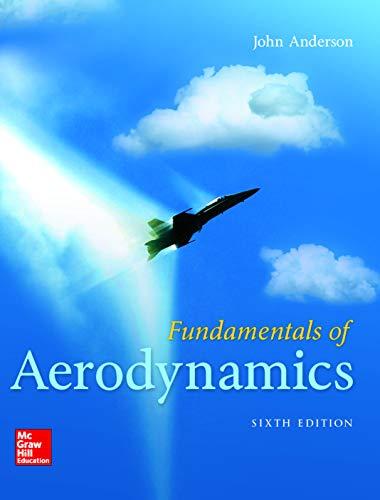Using the same flight conditions and the same value of the skin-friction coefficient from Example 12.3, and
Question:
Using the same flight conditions and the same value of the skin-friction coefficient from Example 12.3, and the results of Problem 12.6, calculate the maximum lift-to-drag ratio of the flat plate that is used to simulate the F-104 wing and the angle of attack at which it occurs.
Data from Problem 12.6:
Consider a flat plate at an angle of attack in a viscous supersonic flow; i.e., there is both skin friction drag and wave drag on the plate. Use linear theory for the lift and wave-drag coefficients. Denote the total skin friction drag coefficient by C f , and assume that it does not change with angle of attack. (a) Derive the expression for the angle of attack at which maximum lift-to-drag ratio occurs as a function of C f and freestream Mach number. (b) Derive the expression for the maximum lift-to-drag ratio as a function of C f and freestream Mach number M.
Example 12.3:


Step by Step Answer:






